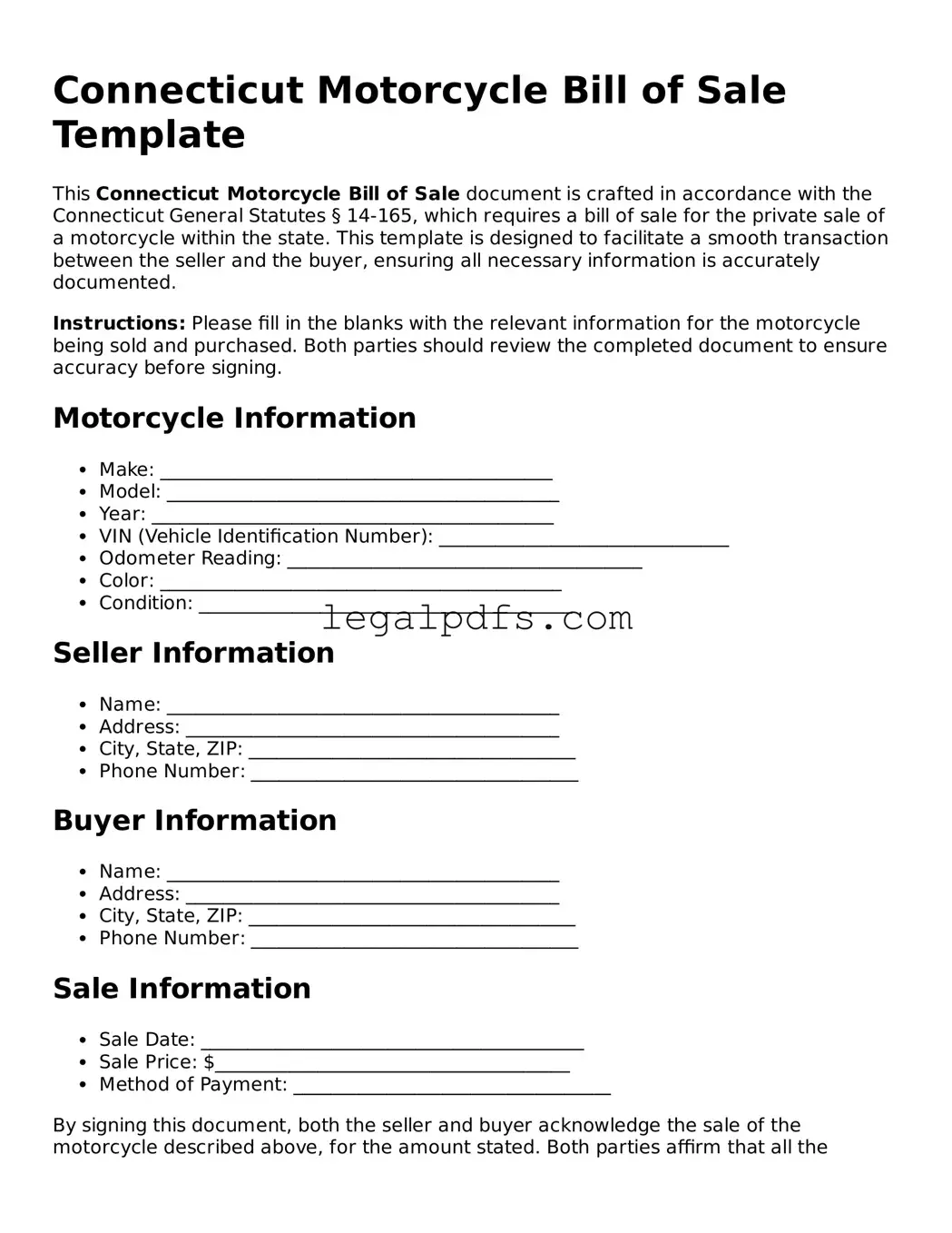What is a Connecticut Motorcycle Bill of Sale?
A Connecticut Motorcycle Bill of Sale is a legal document that records the sale and transfer of ownership of a motorcycle from a seller to a buyer in the state of Connecticut. It provides essential information about the transaction, including details about the motorcycle, the sale price, and the parties involved.
Why do I need a Connecticut Motorcycle Bill of Sale?
This document serves as a receipt for the purchase and is crucial for legal protection in case of disputes. It is also required for the buyer to register the motorcycle in their name with the Connecticut Department of Motor Vehicles (DMV). Without it, the transfer of ownership cannot be officially recorded.
What information should be included in a Connecticut Motorcycle Bill of Sale?
The bill of sale should include the make, model, year, and Vehicle Identification Number (VIN) of the motorcycle, the sale price, the date of sale, and the names and signatures of both the buyer and the seller. Additionally, it's recommended to include the motorcycle's mileage at the time of sale.
Do I need to notarize my Connecticut Motorcycle Bill of Sale?
While notarization is not a requirement for a Motorcycle Bill of Sale in Connecticut, it is a good practice to have the document notarized. This step adds an extra layer of authenticity and can protect both parties in the event of a legal dispute.
Can I create a Connecticut Motorcycle Bill of Sale myself?
Yes, you can create a Motorcycle Bill of Sale yourself. There are templates available online that conform to Connecticut's requirements. Ensure that the document contains all necessary information and is clear and concise. Both parties should review the document before signing.
How do I register a motorcycle in Connecticut with a Bill of Sale?
To register a motorcycle in Connecticut, take the Bill of Sale, proof of insurance, and the motorcycle's title to your local Connecticut DMV office. If the motorcycle is used, you may also need to complete a VIN verification. The DMV will use the Bill of Sale to transfer the motorcycle's title to your name.
Is a Bill of Sale the same as a title?
No, a Bill of Sale is not the same as a title. The Bill of Sale is a transaction record, showing that the buyer has purchased the motorcycle from the seller. The title is a legal document that proves ownership of the motorcycle. When you register the motorcycle, the DMV will issue a new title in your name, using the Bill of Sale as part of the documentation process.
